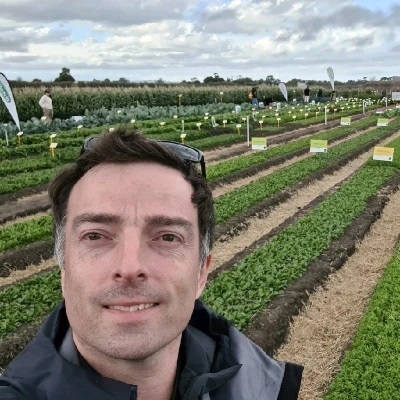The Netherlands
June 2024
Within a month and a half, you can harvest it, it's packed with nutrients, and in ancient Rome, they used it for dental care. Of course, we're talking about… spinach! In May, we shared exciting news on this versatile vegetable: our spinach varieties are resistant to the latest strain of downy mildew (Pe:20).

Guillaume Daverdin has been the Crop Breeding Manager for Spinach at Enza Zaden for two years and knows everything about our race against time to stay ahead of this dreaded spinach disease caused by a fungus-like microorganism. We asked Guillaume five questions about this special crop.
What is downy mildew and why is it such a big problem?
“Downy mildew in spinach is caused by the oomycete pathogen Peronospora effusa (Pe),. This pathogen thrives in cool, moist environments, making it a common problem in regions with such climates or during specific seasons when these conditions prevail. It’s often confused with fungi, but officially it’s not. The plant disease causes a lot of problems for growers, so resistance to this disease is important to them.”
What is the news we recently shared with the outside world?
The International Working Group on Peronospora in Spinach (IWGP) announced the identification of a new race Pe:20 of the downy mildew pathogens (Peronospora effusa affecting spinach. The determination was based on a comprehensive review of isolates collected from growers' fields and experimental trials worldwide. After testing our portfolio, we concluded that our 11 active commercial spinach hybrids have proven resistant to this new strain, Pe:20, which means we propose a wide range of solid varieties with excellent field performance, outstanding post-harvest quality and resistances to official Pe strains. So, our most recent commercial spinach varieties are resistant to all the official Pe strains.”
The spinach market is fierce and shared between multiple breeding companies. What do we aim for?
"The organic market in the US is our most important sales area. It is very important for us to develop hybrids that are resistant to the latest variants of downy mildew and adapted to the US growing conditions. But also in Europe, where organic spinach is still a developing market segment, growers want guarantees and more and more choose varieties with full resistance. Because more crop protection compounds are being blacklisted there, genetic resistance is increasingly sought after.
Our goal is to become a bigger player in this crop. Besides the US, spinach is also widely grown in Spain and Australia, amongst others. The resistance to Pe:20 helps us demonstrate our breeding strength and will help increase our market share."
What makes spinach such a special crop in your opinion?
"Spinach is an interesting crop because of its biology and the breeding technics that it requires. 3 or 4 generations per year can be grown in the greenhouse, this makes working with spinach very dynamic. Also, spinach pollination occurs by wind and the crop is very sensitive to climatic conditions which makes spinach a very special crop. To stay ahead of downy mildew, we need strong collaboration between multiple teams (phytopathology, molecular biology, production, etc.) and we need to all be very reactive to the latest evolutions of the market.”
Are we going to lean back, now that we know our varieties are resistant?
“Definitely not. Also, because we take a lot of other qualities into account such as color, yield, or post-harvest quality... looking for the best varieties is a never-ending development. Our resistance discovery pipeline in addition to quality improvement programs have shown their strength and reactivity and we will continue to improve our process to make sure that we will be ready for Pe:21 and other challenges ahead.”